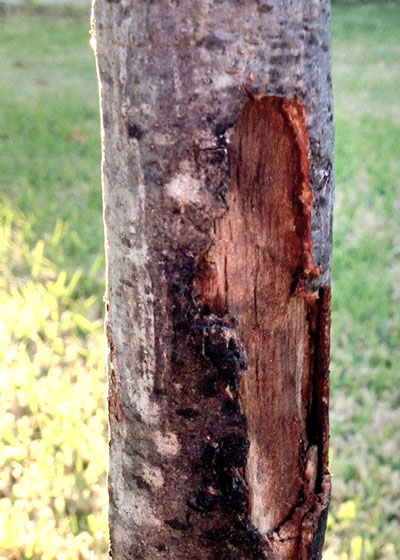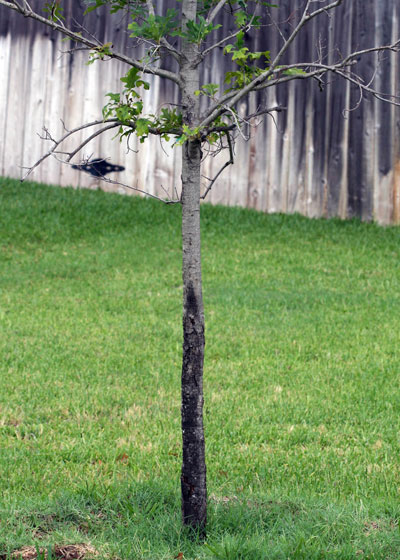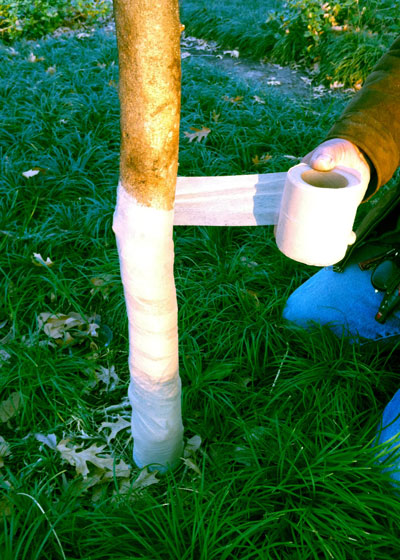Question of the Week: August 17, 2017
“Neil, My young red oak tree is going downhill rapidly. Its leaves are turning brown and crisp. Can it be saved?”
When someone asks me about a red oak or Chinese pistachio that is on the decline, I always begin my reply by asking if they are seeing any cracking or splitting of the bark on the trunk.

Photo: Trunk of new Shumard red oak shows severe splitting.
In most cases they respond affirmatively – yes, there is bark coming loose from the trunk.
I then ask if it’s either on the south or southwest side of the trunk, and invariably they say, “Why, yes it is. How did you know?”
And then I reply, “Because that’s where the summer sun is most intense. It causes the bark to overheat and crack like a chipped windshield on a cold winter morning when you turn the defroster to ‘High.’”
When I ask if the trunk of the tree was wrapped for the first two years it was planted, without exception they tell me it was not.
In explanation of what happens…
Red oaks and Chinese pistachios have very thin bark when they’re young. As long as they’re in the nursery they shade one another, but when we bring them home and plant them out into our landscapes, suddenly they’re shoved into full sunlight. That’s when the sunscald happens and the bark starts drying and cracking.
Like damage to our own skin following prolonged exposure to sun, this damage to the trees’ trunks takes a couple of years to show up. But gradually the bark begins to come loose in vertical cracks. Within a few months you can see the interior wood of the trunk, and then decay may set in. Eventually black ooze may become obvious as the tissues deteriorate.

Photo: Bark splitting leads to ooze from decaying tissues. Leaves are lost and tree may not survive. All could be avoided by wrapping the trunk at time of planting.
The easy, non-negotiable way to avoid all of this…
Want to bypass all this agony? Apply paper tree wrap to the trunk of your new red oak or pistachio the day that you plant it. Wrap the trunk from the ground up to the lowest branches, and leave it wrapped for the first couple of years. Open it up periodically to be sure all is well beneath the wrap, but don’t leave it exposed to the sunlight for long. Once the top of the tree starts to grow and cast shade onto its own trunk you can think about removing the wrap.

Photo: Tree wrap being applied to a new tree’s trunk. It should be left in place for 18 to 24 months or longer. It is elastic and can expand as the trunk grows larger.
